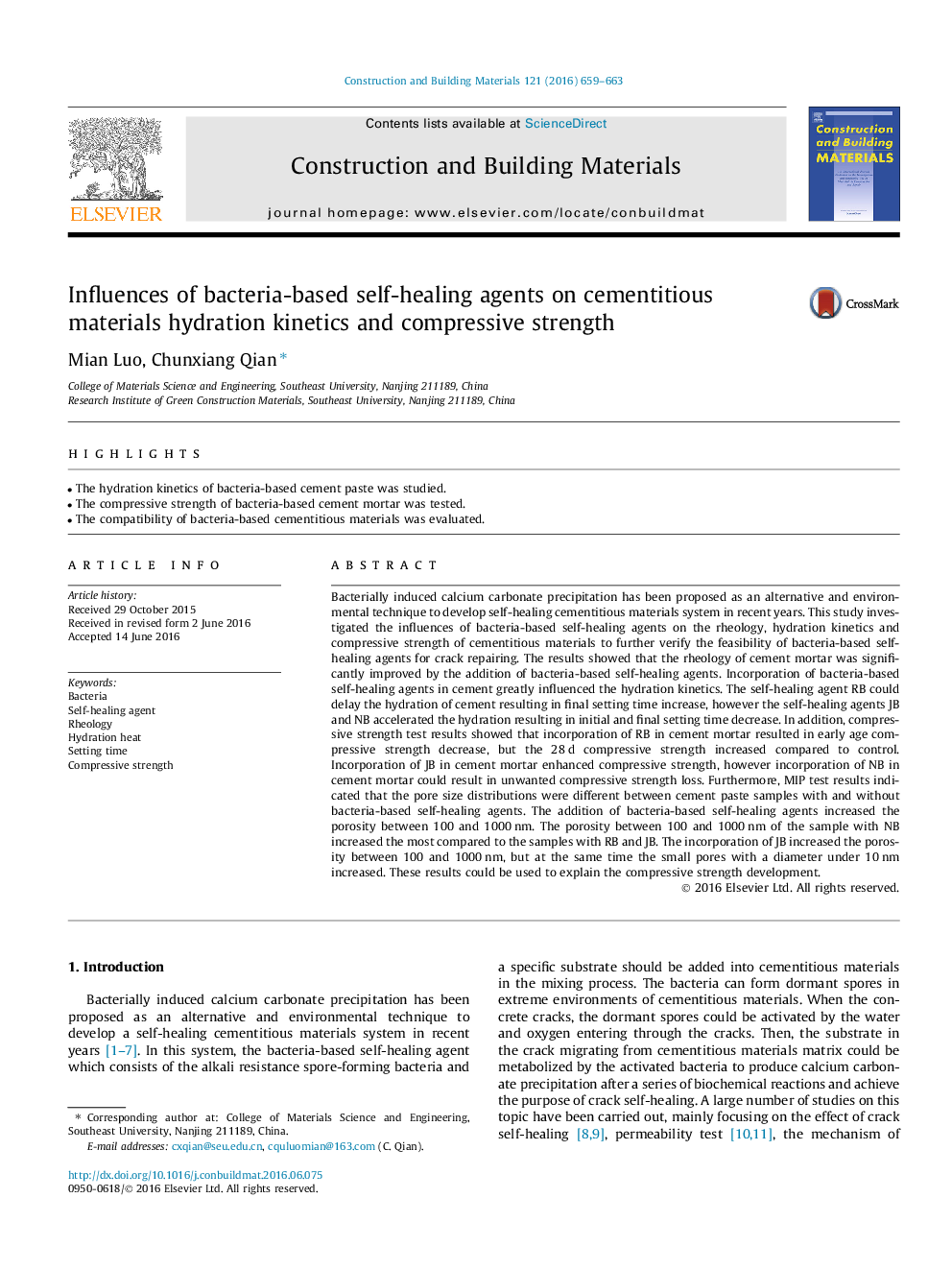| کد مقاله | کد نشریه | سال انتشار | مقاله انگلیسی | نسخه تمام متن |
|---|---|---|---|---|
| 6718571 | 503532 | 2016 | 5 صفحه PDF | دانلود رایگان |
عنوان انگلیسی مقاله ISI
Influences of bacteria-based self-healing agents on cementitious materials hydration kinetics and compressive strength
ترجمه فارسی عنوان
تأثیر عوامل خود درمان کننده باکتری بر روی سینتیک هیدراتاسیون مواد سیمان و مقاومت فشاری
دانلود مقاله + سفارش ترجمه
دانلود مقاله ISI انگلیسی
رایگان برای ایرانیان
کلمات کلیدی
باکتری، عامل خود شفا، رئوئولوژی، گرما آبرسانی، زمان تنظیم، استحکام فشاری،
موضوعات مرتبط
مهندسی و علوم پایه
سایر رشته های مهندسی
مهندسی عمران و سازه
چکیده انگلیسی
Bacterially induced calcium carbonate precipitation has been proposed as an alternative and environmental technique to develop self-healing cementitious materials system in recent years. This study investigated the influences of bacteria-based self-healing agents on the rheology, hydration kinetics and compressive strength of cementitious materials to further verify the feasibility of bacteria-based self-healing agents for crack repairing. The results showed that the rheology of cement mortar was significantly improved by the addition of bacteria-based self-healing agents. Incorporation of bacteria-based self-healing agents in cement greatly influenced the hydration kinetics. The self-healing agent RB could delay the hydration of cement resulting in final setting time increase, however the self-healing agents JB and NB accelerated the hydration resulting in initial and final setting time decrease. In addition, compressive strength test results showed that incorporation of RB in cement mortar resulted in early age compressive strength decrease, but the 28Â d compressive strength increased compared to control. Incorporation of JB in cement mortar enhanced compressive strength, however incorporation of NB in cement mortar could result in unwanted compressive strength loss. Furthermore, MIP test results indicated that the pore size distributions were different between cement paste samples with and without bacteria-based self-healing agents. The addition of bacteria-based self-healing agents increased the porosity between 100 and 1000Â nm. The porosity between 100 and 1000Â nm of the sample with NB increased the most compared to the samples with RB and JB. The incorporation of JB increased the porosity between 100 and 1000Â nm, but at the same time the small pores with a diameter under 10Â nm increased. These results could be used to explain the compressive strength development.
ناشر
Database: Elsevier - ScienceDirect (ساینس دایرکت)
Journal: Construction and Building Materials - Volume 121, 15 September 2016, Pages 659-663
Journal: Construction and Building Materials - Volume 121, 15 September 2016, Pages 659-663
نویسندگان
Mian Luo, Chunxiang Qian,
